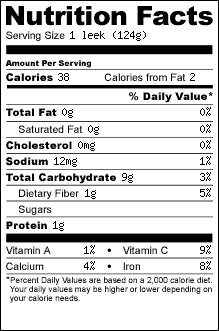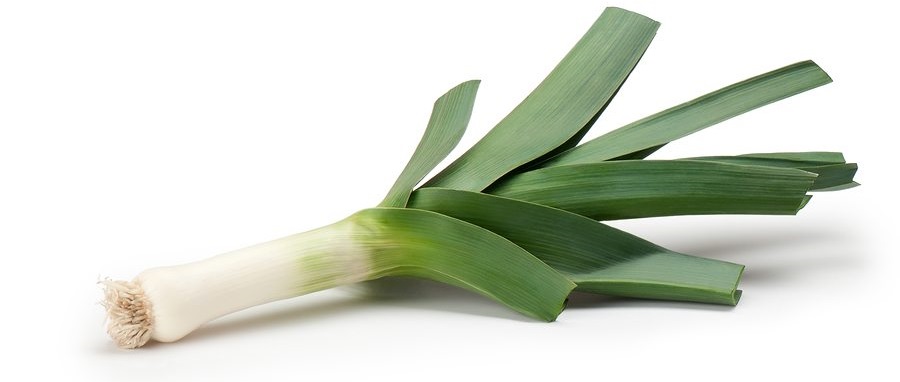Onions, shallots, and scallions – there’s a fourth missing puzzle piece to this quadrant – Leeks. Fitting, isn’t it? Often it can be hard to immediately tell the difference between these vegetables as they resemble and bring to mind onions. Why so many names, varieties, and tweaks to such an otherwise simple vegetable family? Because this is fresh produce, and there is hardly a shortage when it comes to variety.
Leeks
So what is it about leeks? What separates them from their eerily similar family members? Believe it or not, there is indeed a difference in each of these onion varieties, each of which adds an entirely different flavor and texture to a dish. To the average grocery store goer, it may seem like you just need an onion, but to the trained eye and chef, the most minute detail can completely change the direction of a dish with a simple change from scallions to leeks.
We know scallions to be long and skinny green cylindrical stalks with small white bulbs at the root. Leeks are essentially aesthetically the same, but on a bit of the larger size when it comes to the bulb and leaves. Interestingly enough, leeks take on a sweeter flavor than onions do. They add just the right amount of dainty onion flavor to the subtleties of both common and rare dishes.
The real flavor and nutrition are found near the lower leaf and bulb. This area is packed with flavonoids. This lower part of the leaf and bulb is where the magic happens with leeks. Leeks are known for their sulfur content from a nutritional standpoint. Sulfur helps with supporting the antioxidants of the body and strengthening the internal system. A majorly researched part behind leeks is the known cardiovascular support. This ties in with the flavonoids and helps with the protection of blood vessel linings, which are vital in heart health. Powerful in Vitamin K, manganese, copper, iron, folate, and Vitamin C, these tiny vegetables bring a lot to the table. Literally.
Although leeks are linked back to Central Asia, they are massively cultivated in European countries. Treasured by the Greek and Roman cultures, leeks were known to have a powerful effect on the throat – even Aristotle commented on this very thing in his day. It is said that royalty consumed leeks daily to promote the consistency of a “stronger voice.”
Since the best part of leeks to use for cooking is mainly the lower leaf and bulb, it’s important to know how to properly wash and cut these greenies to get the most out of the nutritional properties. Keep in mind leeks are grown underground in the soil and therefore are almost always dirty. Begin by cutting off the majority of the green tops and leaves. Cut off the root where the bulb is and slice bulb in half, lengthwise. It’s essential at this point to thoroughly wash now and get the most valuable part of the leek clean as can be. Cut thin strips into 2-inch lengths, right up until you hit the lower green section. Run your freshly crosswise cut leek slices under fresh cold water once more before use. If by chance you come across a dish calling for the use of whole leeks, you are going to want to cut from the opening to the very ends of the green part. This means you start above the lighter colored bulb part and are mainly focused on the greenery. Next up, you want to thoroughly rinse the entire leek since you now include the tightly bred green tops. Spread the leaves apart and get those little guys clean! At this point, you may want to cut off the very top, darkest green tops. These are not typically useful for cooking. Be sure to cut off the actual root/end of the leek. Now you should have a nice few inches of the whole bulb and some green left, all intact. This is all you will need from the entire leek!
Whether you want to use leeks as a welcome addition to soups or garnish with them finely cut raw, you can do no wrong. The subtle taste behind these special, lightly flavored onions will not be a deal breaker in a dish but will enhance an already excellent palate.


Western Veg-Produce, Inc.
PO Box 82217
Bakersfield, CA 93380
Office: 1-800-WVegPro (983-4776)
Fax: 1-661-637-2365
Sales: sales@wvegpro.com
Accounting: accounting@wvegpro.com


